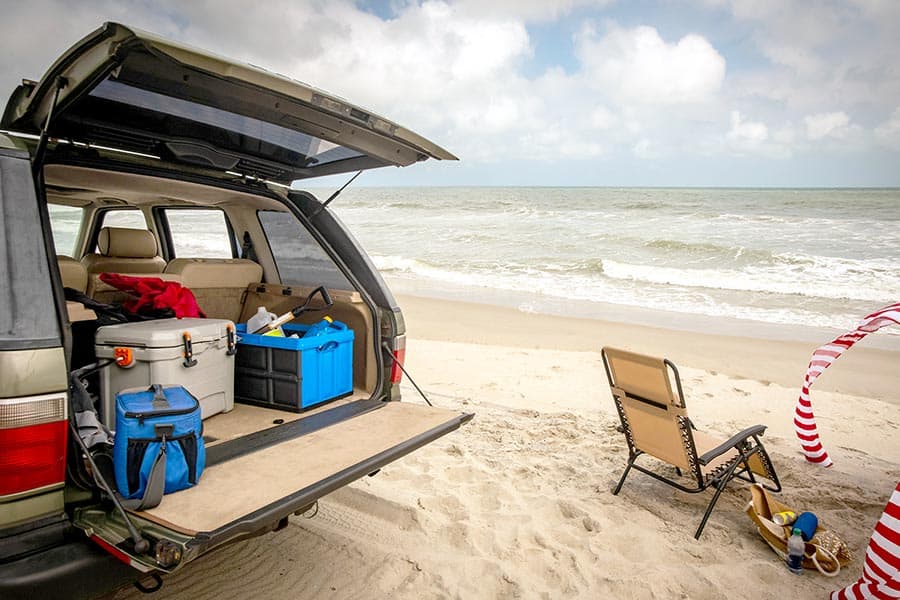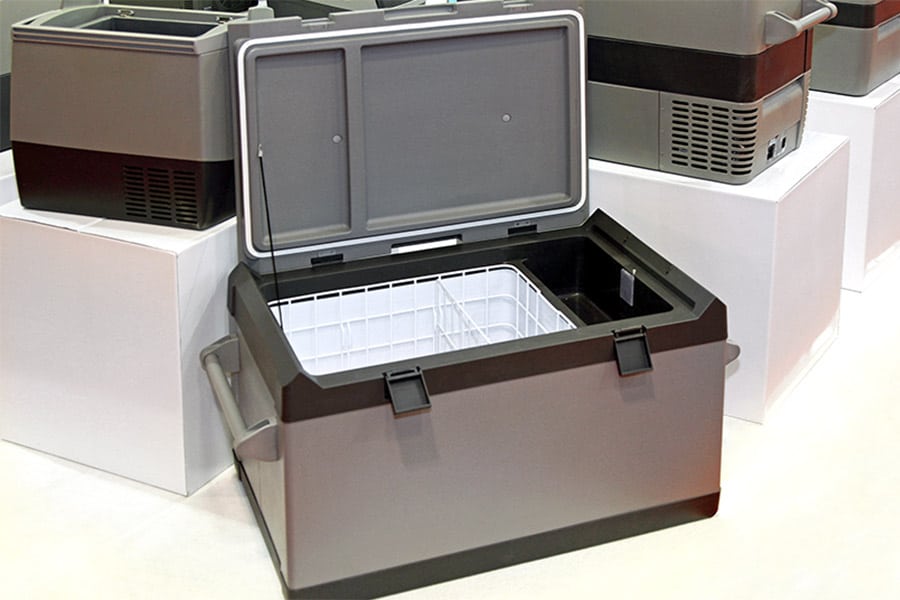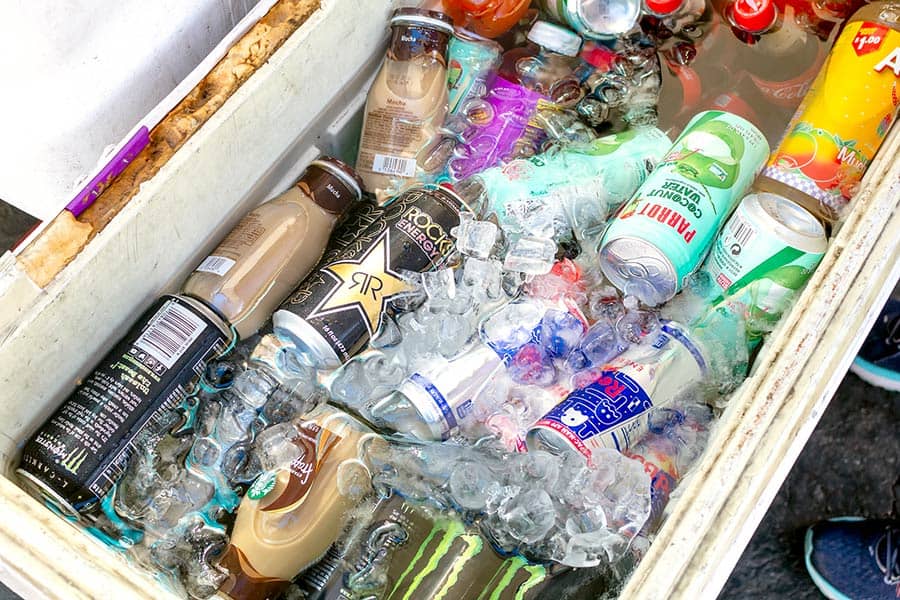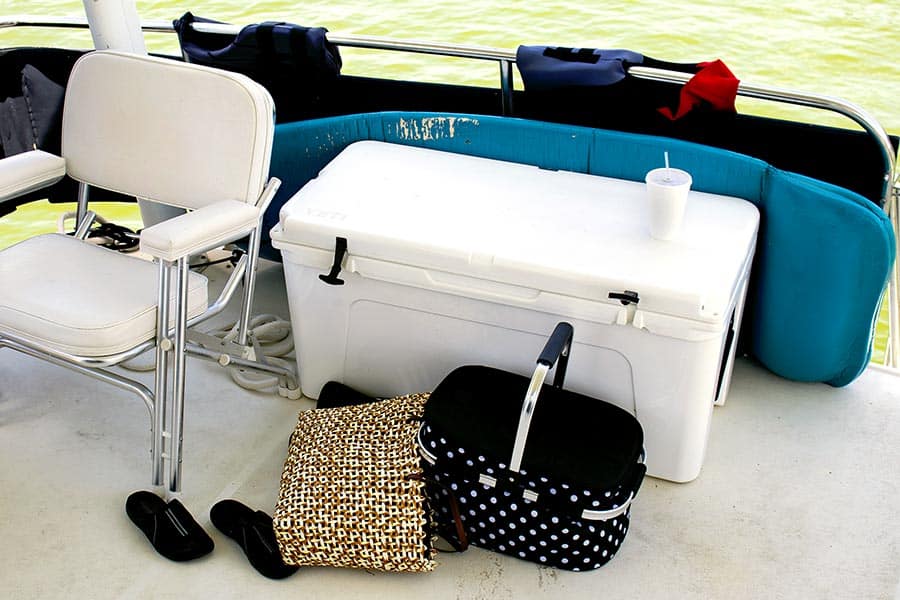
Are you looking to invest in a camping fridge or cooler for your next outdoor excursion? Of course, having one or the other is a great convenience when camping, but knowing the difference between the two is essential.
The difference between a camping fridge and a cooler is that a fridge is powered electrically, while a cooler relies on ice to keep food and drinks cold.
In this post, we explore what sets them apart from one another.
Fridges vs. Coolers
Keeping food cold is essential to camping, especially if you are staying in remote areas for multiple days. Perishable foods must be kept at a safe temperature, or the risk of foodborne illnesses increases dramatically.
Cold storage also helps extend the life of your food by keeping it fresh and safe from spoilage, meaning you can enjoy it for longer without the expense of replacing it.
Camping Fridges
Camping fridges, also known as portable or car fridges, are specially designed refrigerators for use in outdoor environments like camping, boating, tailgating, RVing, or on a road trip.
Constructed of durable materials, they are designed to conveniently keep food at a safe temperature. From small compact ones to larger units with multiple compartments, camping fridges are available in different sizes, with features such as temperature controls, digital displays, and even USB charging ports. Additionally, they can run on various power sources such as AC/DC electricity, propane, or solar power.

Many come with a fridge/freezer option that allows setting the unit’s temperature to either refrigerate or freeze. Some units even come with dividers or separate compartments so that you can utilize both simultaneously.
Fridges offer a range of benefits. For example, they can keep food and drinks cold or frozen for long periods without using much energy. This convenience is essential when running off of a battery or solar panels.
Additionally, they don’t use ice, so this frees up more space inside that would be taken up with ice in a cooler and eliminates the need for heavy bags of ice, which can be challenging to manage and lead to potentially soggy and ruined food when it melts inside.
Pros:
- Low maintenance and easy to use
- Portable and space efficient
- Doesn’t require ice
- Ability to cool or freeze items
- Energy-efficient and can be used with solar power
Cons:
- Can be expensive to purchase initially
- Can be difficult to fit into some camping setups
- Needs a power source
- Some can be noisy when running.
Van Camping Life Fun Fact: Red flashlights are crucial for stargazing, allowing campers to experience the night sky in its natural state without disruption from bright white lights.
Other Posts of Interest
- What Vans Can You Stand Up In?
- 28 Fun Camping Activities That Don’t Involve A Campfire
- Campground Etiquette: Dos And Don’ts (How To Be A Model Camper)
- How To Choose a Camping Flashlight: A Complete Buyer’s Guide
Camping Coolers
A cooler, also known as an ice chest, is a container that keeps food and beverages cold during outdoor activities such as camping, picnics, or tailgating. They are usually made of durable materials such as hard plastic or metal and are designed to withstand rough handling and outdoor conditions such as rain, mud, and dust.

Unlike camping fridges, which use electricity to cool their contents, coolers use ice or ice packs to maintain a low temperature. Many are designed with heavy insulation and special seals to keep ice from melting too quickly and prevent water from leaking out.
Coolers come in different sizes and capacities, ranging from small personal to large ones that can hold several days’ worth of food and beverages for a family or group. In addition, they may have different features, such as built-in cup holders, built-in bottle openers, or integrated drainage systems. Finally, some are sturdy and big enough that they can serve as a place to sit.
Ice chests offer several benefits for outdoor enthusiasts, such as keeping food and beverages cold for extended periods without requiring electricity or other power sources. In addition, they provide a convenient storage solution for perishable food items and help reduce the risk of foodborne illness.
Overall, a cooler can be a useful and cost-effective alternative to a camping fridge, providing reliable and convenient cooling solutions for food and drinks in various outdoor settings.
Pros:
- Lightweight and easily transportable
- Cheaper than a camping fridge
- Doesn’t require electricity
- Multiple sizes are available so you can fit into tight spaces
Cons:
- Not as effective at maintaining a lower and sustained temperature
- Requires ice
- Not as long-lasting as a camping fridge
- Lid seal can be weak and prone to leaks
- Smaller models may not have enough capacity for large items
- Insulation performance can vary depending on the model.
Camping fridges and coolers are both popular options for keeping food and drinks cold while camping, but they each offer different advantages.
Fridges use electricity to power their cooling system, which is more efficient at maintaining a constant temperature than coolers. In contrast, coolers rely on ice or ice packs to keep their contents cold.
Camping fridges tend to be more expensive and require a power source, but they are also more durable and have a larger capacity than coolers. On the other hand, camping coolers are usually lighter and cheaper, making them ideal for short trips or smaller groups. Ultimately, both options can be good depending on your needs and budget.

Keep Your Cool
When deciding between a camping fridge or cooler, it’s paramount to consider your needs and budget. Fridges are more expensive but provide better insulation and larger capacity than coolers.
On the other hand, coolers are usually lighter and cheaper, making them ideal for shorter trips or smaller groups of people. Both options have advantages that can be beneficial depending on your outdoor activities, so take some time to evaluate which option would suit you best before purchasing.
Related Questions
Does a Camping Fridge Need Ventilation? Yes, a camping fridge needs adequate ventilation to function properly. Improper ventilation can reduce cooling performance, cause overheating and damage, increase energy consumption or cause a safety hazard.
Should Ice Be On Top or Bottom of the Cooler? Generally, placing the ice on the bottom of a cooler and food on top of it is recommended. This ensures that the coldest temperatures are closer to the items needing to stay cool, allowing any melted water to drain away from food. Additionally, if ice is placed on top of food, it may cause items like fruit or vegetables to become frozen or soggy.






